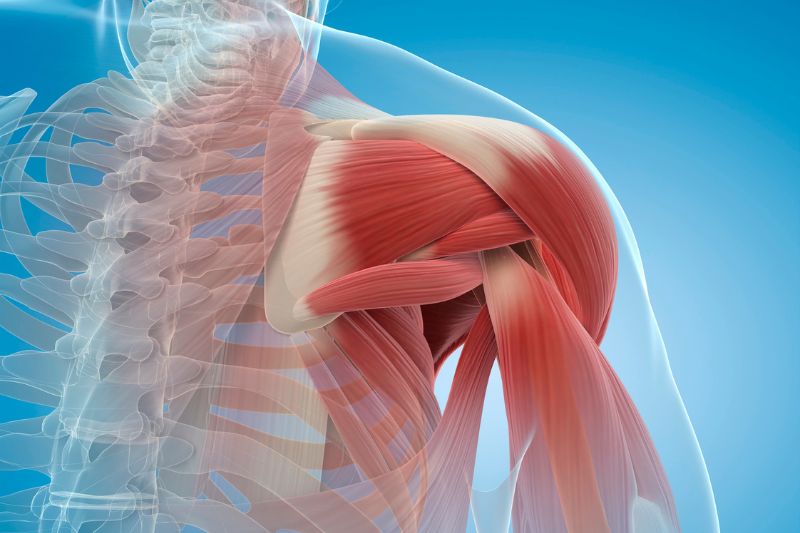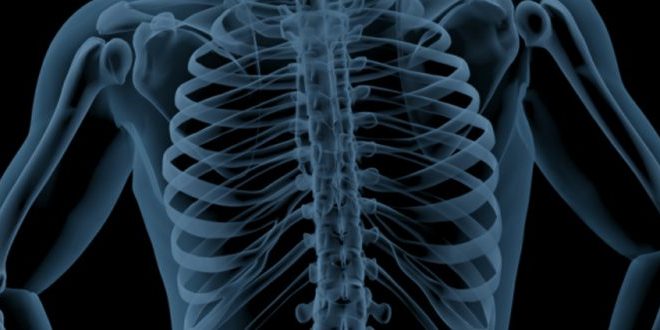The Importance of Muscle Balance in Athletic Training
True athletic strength relies on harmonious muscle balance—when prime movers and stabilizers work together, performance soars and injury risk plummets. Imbalances force compensations that cause joint stress, limited range, and chronic pain. Precision assessments pinpoint weak or overactive muscles, while chiropractic adjustments, neuro reset, myofascial release, and tailored movement instruction restore functional symmetry. Rebuilding balance unlocks sustainable power, resilience, and efficient, pain-free movement.

In the world of athletic training, strength gets a lot of the spotlight. We chase heavier lifts, faster sprints, and harder hits. But what often gets overlooked—until something goes wrong—is balance. Not just balance in the sense of standing on one leg, but muscle balance: the harmony between the muscles that push and those that pull, between stabilizers and prime movers, between strength and control.
The truth is, strength without balance sets you up for breakdown. When one muscle group overpowers another—or when certain muscles are "asleep" due to poor activation—you invite compensation. That compensation may work in the short term, but over time it leads to dysfunction, chronic tightness, limited performance, or injury.
Think about a powerful runner with tight hip flexors and weak glutes. They may be fast, but they're also one awkward step away from a hamstring pull or low back pain. Or the CrossFitter with dominant traps but underactive lower traps and core. They can muscle their way through workouts, but their shoulders ache and their movement isn’t clean.
This is where chiropractic and movement-based care come in. At Mountain Movement Chiropractic & Natural Health, we don’t just focus on force—we focus on function. Through targeted assessments, chiropractic adjustments, and neuromuscular retraining, we help your body move as a unified system.
What Is Muscle Imbalance?
Muscle imbalance occurs when opposing muscle groups are uneven in strength, tone, or activation. It’s not just about one muscle being tight or another being weak—it’s about how those muscles interact. When one part of your kinetic chain overworks while another underperforms, movement becomes inefficient, posture deteriorates, and injury risk climbs.
Here are some common examples:
Quads Dominating Glutes
This is especially common in runners, cyclists, and lifters. When the glutes don’t activate properly—due to poor neuromuscular connection or pelvic misalignment—the quads pick up the slack. The result? Anterior knee pain, tight hip flexors, and poor propulsion.
Pec Tightness Overpowering the Upper Back
Lifters, swimmers, and desk-bound athletes often develop dominant pecs and underactive scapular stabilizers. This creates rounded shoulders, poor overhead mobility, and increased risk for rotator cuff strain or impingement.
Core Weakness with Overactive Hip Flexors
Without proper deep core engagement, hip flexors and low-back muscles start doing more than they’re meant to. This leads to anterior pelvic tilt, tight lumbar muscles, and inefficient trunk stabilization during lifts, sprints, or rotational movements.
These imbalances don’t just affect strength—they change how you move. They alter your gait, restrict your range of motion, and cause compensatory movement patterns that sap efficiency and elevate injury risk. What feels like “tight hamstrings” might actually be underactive glutes. What looks like poor posture may stem from dormant scapular muscles.
At Mountain Movement, we don’t just treat the pain—we find and fix the pattern. By identifying these imbalances early, we help restore harmony to your movement system and rebuild strength that actually supports your performance.
The Hidden Cost of Imbalance: Performance & Injury Risk
When your muscles aren’t working together in balance, your body compensates—and compensation always comes at a cost. You may not feel it right away, but over time, those small dysfunctions start chipping away at your performance and resilience.
Increased Joint Stress
When one muscle group is overactive and its opposing group is underperforming, the forces placed on your joints become uneven. This leads to excessive wear and tear in places like the knees, hips, shoulders, and spine. For example, quad dominance can overload the knees, while weak rotator cuff muscles leave shoulders vulnerable to instability.
Limited Range of Motion & Power
True strength and speed come from full range, coordinated motion. Muscle imbalances restrict that range—tight pecs pull your shoulders forward, inactive glutes prevent full hip extension, tight calves limit ankle mobility. All of this translates into reduced power output and limited athletic performance.
Higher Risk of Strains, Sprains & Tendinitis
Most non-contact sports injuries don’t happen because of one big moment—they happen because the body has been compensating for too long. Muscle imbalance leads to faulty movement patterns, setting the stage for soft tissue injuries like hamstring strains, IT band syndrome, shin splints, or Achilles tendinitis.
Poor Recovery & Training Plateaus
If your movement patterns are built on imbalance, recovery is slower and inconsistent. Overworked muscles stay tight. Underused muscles never rebuild. You hit plateaus, lose motivation, and sometimes start experiencing “mystery pain” that just doesn’t go away with rest or stretching.
The good news? These patterns are preventable—and fixable. With the right assessments and care, you can rebalance the system and rebuild the foundation for long-term strength, mobility, and performance.
How We Identify Muscle Imbalances at Mountain Movement
Most athletes don’t realize they have a muscle imbalance—until they’re dealing with pain or hitting a frustrating plateau. That’s why at Mountain Movement, we take a proactive, precision-based approach to movement evaluation. Our goal? Catch dysfunction before it becomes limitation.
The Day Method: Your Personalized Movement Map
Developed by Dr. Michael Day, this proprietary assessment system identifies:
- Movement asymmetries
- Joint restrictions
- Muscle activation failures
- Compensatory patterns
By analyzing how your body moves in real time, we can trace pain or dysfunction back to its root—long before it becomes an injury.
Move IQ Exam: Your Neuromuscular “Check Engine Light”
This diagnostic tool assesses how well your brain and muscles are communicating. We evaluate:
- Muscle response time
- Reflexive control
- Functional coordination
It’s like a “check engine light” for your movement system, giving us insight into which muscles are overworking, underworking, or misfiring altogether.
Sport-Specific Strength & Mobility Testing
We tailor our assessments to the demands of your sport—whether it’s golf, running, weightlifting, or team-based athletics. These tests help us measure:
- Joint range of motion under load
- Postural endurance
- Functional strength across chains of motion
This full-picture approach ensures we’re not just chasing symptoms—we’re uncovering the root causes of imbalance and building a smarter, more resilient body from the ground up.
Our Tools to Restore Muscle Balance
Once we identify the root causes of imbalance, the next step is to retrain the body for harmony. At Mountain Movement Chiropractic & Natural Health, we combine hands-on care, functional rehab, and nervous system work to restore balance where it matters most—your movement.
Here’s how we do it:
Functional Chiropractic Adjustments
When joints are out of alignment, muscles have to compensate. Our targeted adjustments restore proper joint motion and symmetry, helping your body distribute load more evenly. This reduces strain on dominant muscles and gives underactive ones a chance to engage.
Neuro Reset
Sometimes the issue isn’t strength—it’s connection. Our Neuro Reset protocols “wake up” muscles that have been neurologically inhibited. Whether it’s glutes that won’t fire, mid-back muscles that won’t stabilize, or a deep core that can’t engage—we turn the switch back on so you can move with control and coordination.
Myofascial Therapy
Tight, sticky fascia can restrict muscle length and limit activation. We use myofascial release techniques to:
- Break down adhesions
- Improve tissue glide
- Restore full, pain-free range of motion
This creates the freedom your body needs to move efficiently and powerfully.
Laser Therapy
Chronic imbalance often leads to micro-inflammation in overstressed tissues. Our laser therapy accelerates healing at the cellular level, helping to:
- Reduce inflammation
- Decrease pain
- Support faster recovery in irritated areas like tendons and fascia
Movement Instruction
Muscles don’t work in isolation—they work in patterns. Our corrective movement programs are tailored to:
- Reinforce balanced movement
- Build strength in underused ranges
- Reprogram faulty mechanics
We teach you how to train smarter, not just harder—because your gains should build you up, not break you down.
Build a Body That Works with You
Muscle balance isn’t just about symmetry—it’s about performance, resilience, and sustainable progress. When opposing muscles work in harmony, you move better, lift stronger, and recover faster. But when one side carries the load for too long, the whole system starts to suffer.
If your body isn’t working together, it’s working against you.
That’s why at Mountain Movement Chiropractic & Natural Health, we don’t just treat isolated pain—we help rebuild integrated strength. Through precise assessments, customized care, and performance-based strategies, we help athletes and active individuals restore balance, improve mechanics, and unlock their full potential.
Let’s Rebuild Your Balance
📍 Visit us at:
Mountain Movement Chiropractic & Natural Health
1901 Laurens Road, Suite E
Greenville, SC 29607
📞 Call us at: (864) 448-2073
🌐 Book Online or Learn More: mountainmovementcenter.com
📆 Hours:
Tuesday–Friday | 9:00AM–5:30PM
Monday, Saturday, Sunday | Closed
💬 Let’s talk movement!
Message us anytime on Facebook or Instagram

We Treat the
Toughest Cases
We'd love to talk with you about yours. Ask us anything and we will get back to you with a detailed answer about your case.

.jpg)




